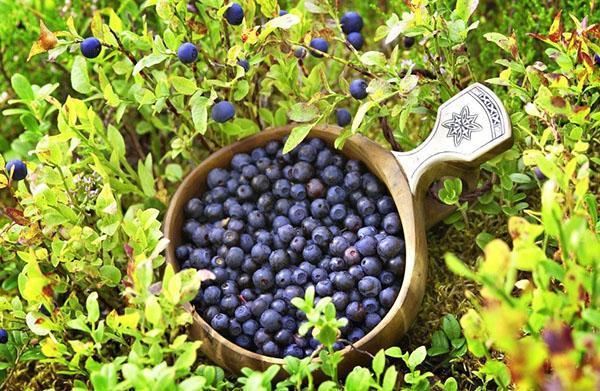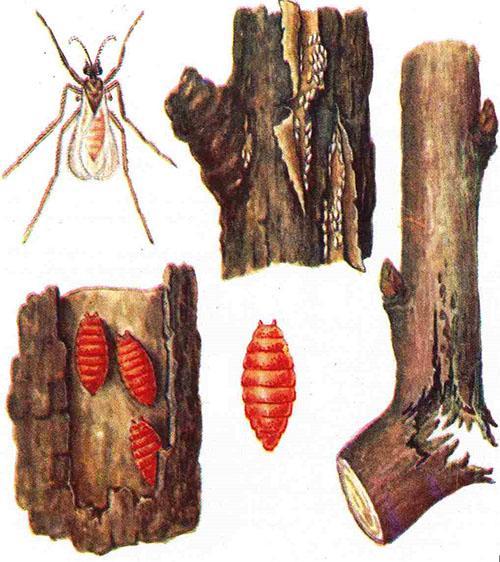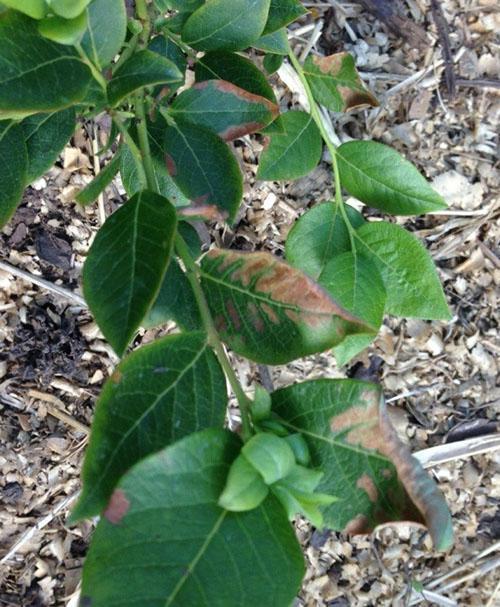Blueberry diseases and pests: tips for novice gardeners

The branchy blueberry bush has unique characteristics, and its fruits are good for health, therefore the plant is actively grown in personal plots. Having figured out in detail what diseases and pests are in blueberries, everyone can count on a rich harvest. Large berries contain folic acid and other beneficial trace elements, which makes the plant so prized. It will be easier for any novice gardener to care for a tree if he first learns how to protect it from pests and various ailments.
Blueberry diseases and pests

It is much easier to prevent the disease of fruit bushes than to deal with the treatment of leaves and bark. Insects are considered the main threat to the plant:
- Glass-maker. These insects damage blueberry bark. It will be possible to prevent infection by cutting off weak or damaged branches in time. Treatment of the soil under the plant in the form mulching is also important.
- May beetles and beetles. The most active pests are in the spring, they devour the roots, leaves and flowers of blueberries. If you do not process the soil under the bush in time, the number of crops will decrease.
- Birds. During the ripening of berries, animals actively eat the harvest. It is recommended to cover the bushes with a fine mesh to protect the blueberries from damage.
- Leafy gall midge. Insect larvae quietly winter in the ground under bushes, and in spring they transform into flies. In spring, gall midge has time to lay eggs on blueberry leaves twice.
- Pear pipe wrench. Adults actively eat the leaves and buds of the plant in the spring. The female lays eggs in the twisted leaves of a bush.
Negatively will affect the health of blueberries, the activity of other insects may also. They most often begin to parasitize in the spring at the end of hibernation. The bud mite, flower beetle and leaf roll. Aphids and caterpillars actively eat healthy leaves of the plant.
In the process of pest control, insecticides are actively used, which in the process of disinfection allow you to cope with insects. In each case, chemical agents are selected individually. Manual shrub treatment and removal of problem leaves and formations also give results.
What are shrubs sick with?

Provoke deterioration of the condition of blueberries can be pests, and diseases in the form of anthracnose. The disease causes noticeable harm to the branches and berries of the bush. In winter, fungi live in diseased branches, and in the spring, along with the rain, spread to healthy parts wood. If the fruits of the plant become soft and bright pink, then this indicates infection. Infected inflorescences turn black or brown tint. It will be easier to prevent the development of the disease if collect ripe berries in a timely manner, since it is in overripe fruits that it parasitizes fungus.
Mummification of berries

Mummification of berries can lead to wilting of young stems and inflorescences. The fungus actively infects the young parts of the plant, and later the fruits. It will be much easier to fight the disease if the berries that have fallen under the bush are removed and burned in time. Loosening of the soil (inter-row disking) is especially effective in large stands. To prevent fungal activity in the spring, the use of urea.
Coccomycosis

The presence of brown or reddish-brown spots in most cases indicates coccomycosis. In case of significant damage to the shrub by the fungus, blueberries curl leaves, and then they can start to fall off. As a result of the harmful effects of the plant sheds up to 80% of foliage. Learn about coccomycosis by the state of the fetus, visually they are underdeveloped, tasteless and with brown patches. Save life the plant will be allowed by the timely treatment of the shrub with pesticides and the collection of foliage in the autumn.
Gray rot

Infects ripe the fruits of the plant are gray rot. To understand that berries are affected by a fungus, it will turn out by their appearance. A gray fluff appears on rotten fruits. Plants that densely planted on the site and overfed with nitrogen, most often suffer from sulfur rot. It is very important not to forget about the timely removal of dead branches and cutting off the shrub. Gardeners should not plant plants close to each other. The use of systemic fungicides containing copper and sulfur will allow cope with the disease.
Fungal lesions

The condition of the plant deteriorates both as a result of the activity of pests and in diseases of blueberries caused by a fungus.
Every amateur gardener should know about other viral ailments that are transmitted by the mycoplasma method and can harm the tree:
- Threading of branches. It is not possible to identify the disease immediately, since within a couple of years the growth of blueberries may begin to gradually slow down. When blueberry leaves turn red and curl, this factor indicates an ailment. Streaks on young shoots are also a sign of disease.
- Red annular spot. The disease is especially dangerous for the life of the shrub, as it causes wilting in complex forms. In this case, red spots in the form of a ring form on the leaves. The disease in neglected forms affects the entire bush.
- Plant dwarfism. The bush infects mycoplasma, as a result of which the fruits become tasteless and small, blueberries grow poorly, and their leaves are small. Already at the beginning of autumn, the leaves of the affected shrub turn yellow, and then quickly turn red.

The above viral diseases are very difficult to treat, so removal of the shrub is an effective method to combat them. This measure will protect other plants in the garden from death.
Treatment and preventive measures

FROM on the positive side, fungicides in the form of "Mission", "Topas", "Serenades", "Alergo". In the process of combating gray rot, they actively use Azophos. During the growing season, "Skor" is used against fungi, during the formation of fruits - "Tersel".
Preventive measures will help prevent the appearance of a bush disease. In late autumn and early spring, the plant is treated bordeaux liquid... Shrubs are planted on the sunny side, at a distance of at least 2 m from each other. It is important to ensure that the soil is acidic, it is fertilized with minerals when planting.
All damaged branches are cut in a timely manner, the fallen leaves under the bush are taken out so that insects do not start in the soil. After picking the berries, the plant is additionally treated with fungicides. Inter-row disking and mulching are positively displayed on the condition of shrubs.